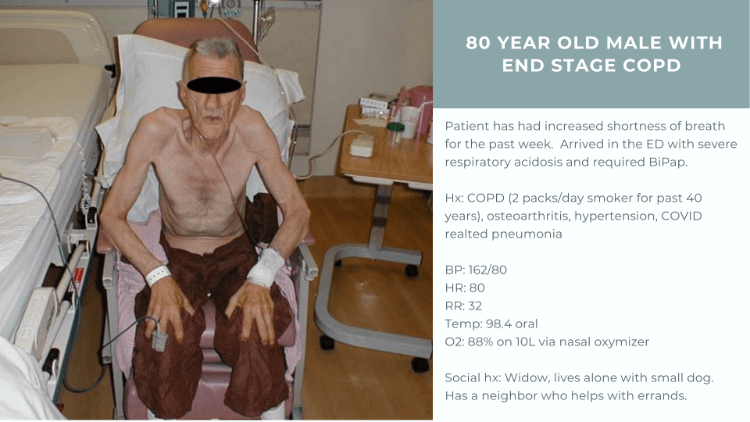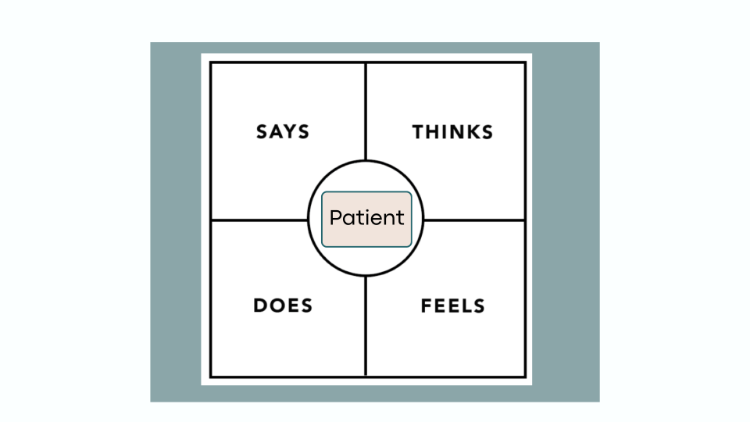
This post was written by Martha Johnson, MSN, RN, CEN, a nurse educator and owner of BreakoutRN.
Caring is a cornerstone of nursing. But how do we teach it?
Before we discuss this teaching strategy, I want to say that I strongly believe that modeling these behaviors is an essential first step in teaching caring and empathy. We can start by abandoning the feared nursing instructor persona and showing compassion and kindness to students.
Next, I think it is essential to distinguish between empathy and sympathy. Sympathy is feeling the same emotions as another. We cannot make students “feel” a certain way. If you or your students need a quick refresh on empathy in nursing, HERE is an excellent article.
But empathy is seeking to understand how another is feeling. And this is a skill that nurse educators can teach. But like any skill, it needs to be practiced. In the spirit of active learning, the brain that does the work does the learning. The creation of an Empathy Map can help students to develop this skill.
How to Implement
INSTRUCTOR PREPARATION
The first step is to decide on a patient persona. I use this exercise when we discuss COPD. Begin by finding a picture of a patient. Then build a bit of a story around the image.
Below is the example that I use:

INSTRUCTIONS TO STUDENTS
In class, draw a simple grid on a whiteboard or use the document camera.

Next, begin filling in the boxes. You can use prompting questions to help students come up with ideas.
SAYS QUADRANT
-
Think of things this patient may directly say to you when you enter the room or ask how they are.
-
This patient may say, “I can’t breathe,” or “Is my oxygen on?” Think of these as direct quotes that the patient would say.
THINKS QUADRANT
-
This quadrant involves getting into the patient’s inner voice. What are they saying to themselves but not out loud? What would they be reluctant to share because they are self-conscious, afraid, or being polite?
-
This patient may say, “I’m afraid of dying” or “I just want to get out of here.”
DOES QUADRANT
-
This section asks the student to think of what the patient physically does. What do they do when you leave the room? What do they do once they are discharged?
-
This patient may leave and smoke a cigarette. They may cry about their hopeless situation.
FEELS QUADRANT
-
This quadrant aims to understand how the patient is feeling. What are they worried about? What are they excited about? How do they feel about their hospital experience?
-
This patient may be worried about moving to assisted living and not having anyone to care for his dog. They may want to go home more
Variations:
VIRTUAL OPTION
An Empathy Map is easy to translate into an online live or asynchronous classroom. For asynchronous online classes, you could set this activity as a discussion board (written or video) and have students respond to their peers’ ideas.
CLINICAL OPTION
In clinical, you could add this empathy map to clinical paperwork or complete it as part of a post-conference activity.
Best for:
Any classroom or clinical experience can benefit from discussing empathy and caring behaviors.
Start Building an Empathy Map
I have always loved the art of nursing and caring for others. Like any skill, empathy and caring can be modeled and taught in nursing education. This activity will take about 15 minutes and seamlessly blend your technical course content with the art of caring. It can be the perfect blend of clinical knowledge and compassionate bedside presence. Just like we do for IV starts and listening to lung sounds, we need to allow our students to practice this art form. Using an Empathy Map can be a helpful tool and allow for a more profound understanding and reflection of how a patient feels.
Martha Johnson, MSN, RN, CEN, is the founder of Breakout RN, a company she created to empower nurse educators to successfully transition from lecture to active learning. She believes active learning does not have to be hard or overwhelming, just take it one activity at a time.
The Ultimate Solution to Develop Clinical Judgment Skills
KeithRN’s Think Like a Nurse Membership
Access exclusive active learning resources for faculty and students, including KeithRN Case Studies, making it your go-to resource.



